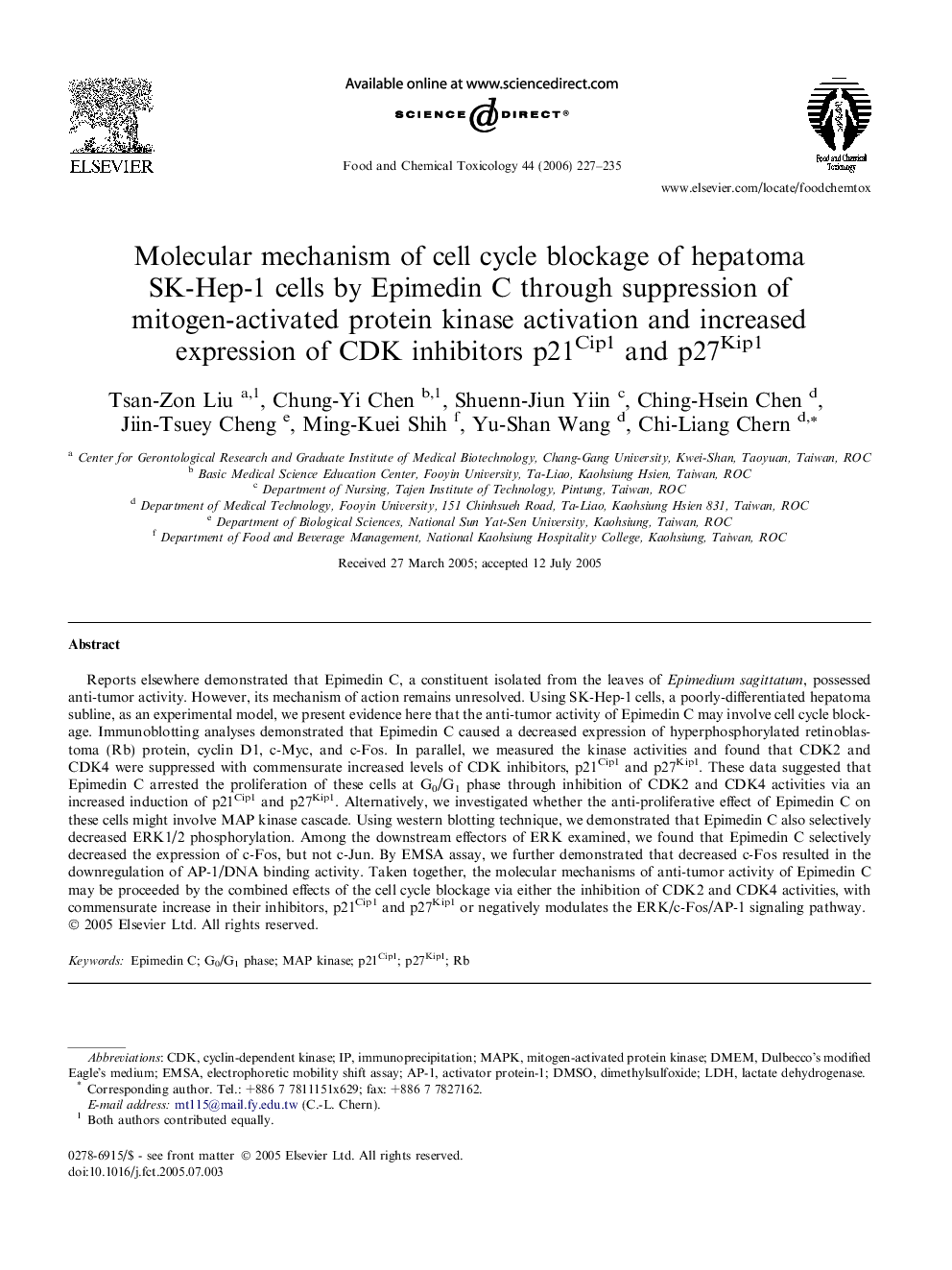| Article ID | Journal | Published Year | Pages | File Type |
|---|---|---|---|---|
| 2588044 | Food and Chemical Toxicology | 2006 | 9 Pages |
Reports elsewhere demonstrated that Epimedin C, a constituent isolated from the leaves of Epimedium sagittatum, possessed anti-tumor activity. However, its mechanism of action remains unresolved. Using SK-Hep-1 cells, a poorly-differentiated hepatoma subline, as an experimental model, we present evidence here that the anti-tumor activity of Epimedin C may involve cell cycle blockage. Immunoblotting analyses demonstrated that Epimedin C caused a decreased expression of hyperphosphorylated retinoblastoma (Rb) protein, cyclin D1, c-Myc, and c-Fos. In parallel, we measured the kinase activities and found that CDK2 and CDK4 were suppressed with commensurate increased levels of CDK inhibitors, p21Cip1 and p27Kip1. These data suggested that Epimedin C arrested the proliferation of these cells at G0/G1 phase through inhibition of CDK2 and CDK4 activities via an increased induction of p21Cip1 and p27Kip1. Alternatively, we investigated whether the anti-proliferative effect of Epimedin C on these cells might involve MAP kinase cascade. Using western blotting technique, we demonstrated that Epimedin C also selectively decreased ERK1/2 phosphorylation. Among the downstream effectors of ERK examined, we found that Epimedin C selectively decreased the expression of c-Fos, but not c-Jun. By EMSA assay, we further demonstrated that decreased c-Fos resulted in the downregulation of AP-1/DNA binding activity. Taken together, the molecular mechanisms of anti-tumor activity of Epimedin C may be proceeded by the combined effects of the cell cycle blockage via either the inhibition of CDK2 and CDK4 activities, with commensurate increase in their inhibitors, p21Cip1 and p27Kip1 or negatively modulates the ERK/c-Fos/AP-1 signaling pathway.
